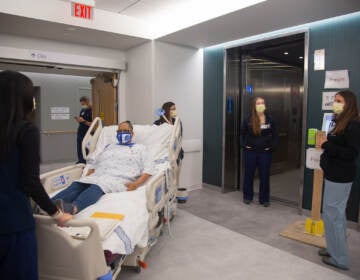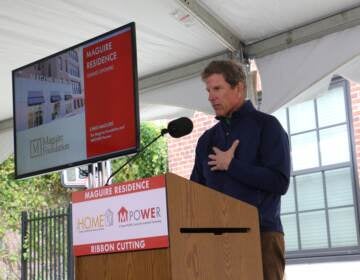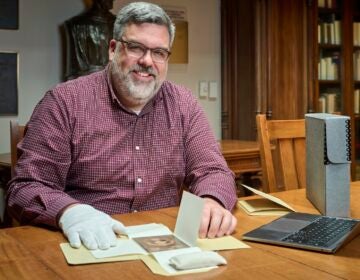UPenn designed its newest hospital building for healing
Maya Lin and Odili Odita adorn The Pavilion with large-scale installations that consider the needs of patients and visitors.
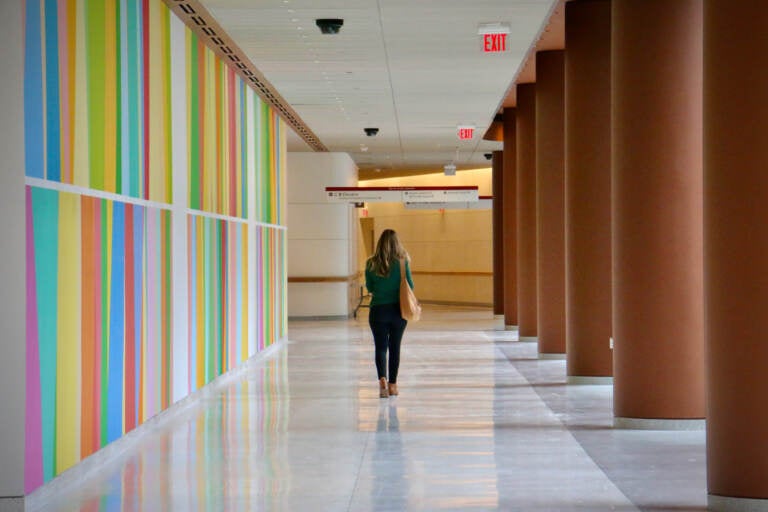
Odili Odita's , ''Field and Sky'' mural at Penn Medicine's Pavillion faces a long bank of windows looking out to a landscaped green area. (Emma Lee)
The Hospital of the University of Pennsylvania built its new 17-story building on a grand scale. With 1.5 million square feet, 504 patient rooms, 47 operating rooms, and an acre of green space, The Pavilion is one of the biggest hospital developments in the country.
The artwork in The Pavilion, opening this weekend, is equally large.
Its front-facing space, a spacious, round room ringed with glass facing the other buildings in the medical campus, features a 40-foot tall, tree-like structure covered in several hundred translucent glass balls.
Maya Lin, the artist best known for designing the Vietnam Veterans Memorial in Washington D.C, designed the sculpture, “Decoding the Tree of Life.”
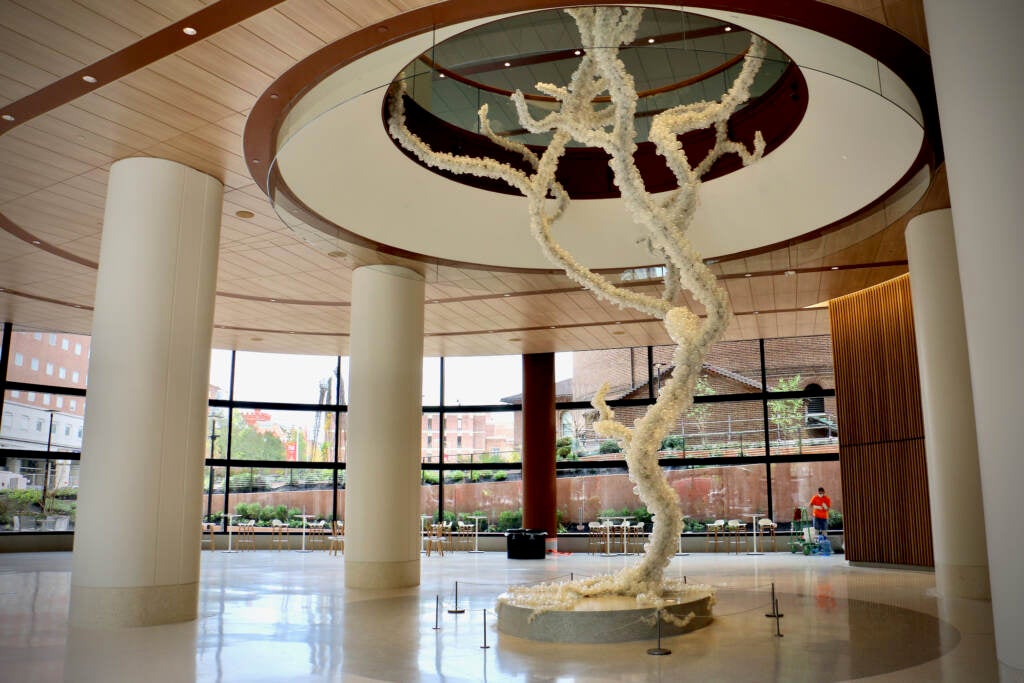
“I like to think that I’m making works so a small child is going to be struck by a sense of beauty or wonder,” Lin said in an interview from her studio in New York. “They’re not going to have to read anything about the piece to make them smile. But then, we’re all kind of kids at heart, too. If I can connect to a child, then I’m probably going to be able to connect to every one of us.”
“Tree of Life” rises up through the ceiling of the atrium into the floor above it. Lin said she wanted the piece to feel organic to the space without dominating it. The sprawling, twisting shape of “Decoding the Tree of Life” was inspired by a branching tree, the shape of the Schuylkill River, and the double helix structure of DNA.
“Those are all things that really represent life,” said Regina Cunningham, the CEO of the Hospital of the University of Pennsylvania. “I think it truly represents what we do here in hospitals, and in particular in this hospital, which is really focused on the future of advanced medicine.”
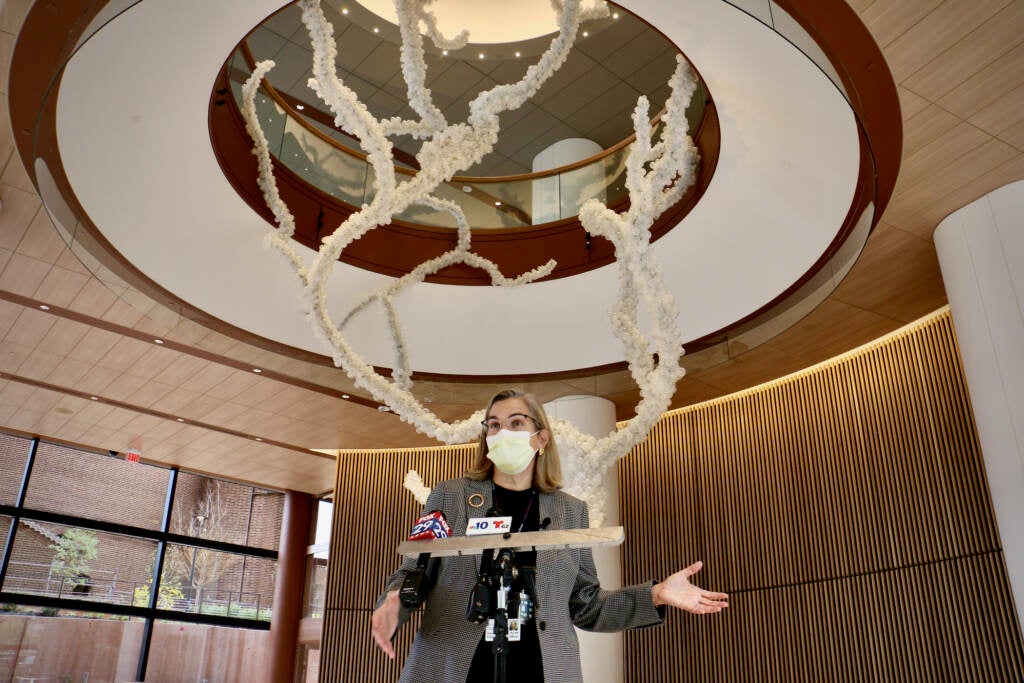
Evidence shows that art can aid in recovery
Cunningham said artwork is an essential part of the design of the hospital, along with its color palette, electric lighting, and ample natural light. Rather than white walls with fluorescent lighting, for example, hallways in the Pavilion are painted shades of cool grays with soft, indirect lighting tucked behind recesses built into the ceiling. That way patients wheeled on gurneys, on their backs looking up, will not have to endure the glare of harsh overhead lights.
“It almost has a spa-like quality,” said Cunningham, a former nurse who believes these details are not just pleasant, but lead to improvements in patient health.
“They have a healing aesthetic,” she added. “I think it creates an environment that is therapeutic.”
A growing body of evidence supports the notion that art and design can have measurable impacts on patient recovery. When designing “Tree of Life,” Lin considered the fact that her piece in the atrium would be the first thing many people see as they enter the hospital.
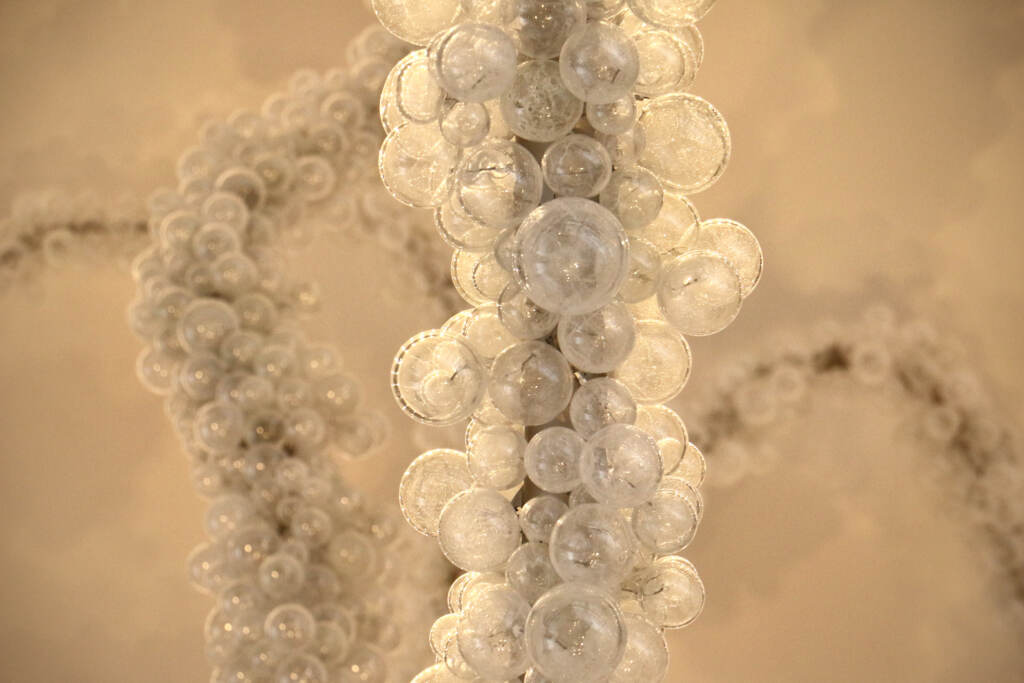
“I do think art can elevate your spirits. It can make you feel a little happier, or it can terrify you and make you feel less-than,” said Lin, who trained as an architect. “If you walk into a room that’s painted red versus walking into a room that’s painted blue, it’s going to completely change your perception of how you feel. That in itself says a lot.”
A long corridor around the corner from Lin’s work leads to an escalator and a bank of elevators. On the 127-foot wall, hospital visitors will find the Pavilion’s second, large-scale art installation, a mural of geometric shapes painted in a range of bright colors and a rainbow spectrum of soft pastels.
The hospital commissioned Odili Odita, a Nigerian-born, Philadelphia-based artist who most recently painted a corridor of the newly completed expansion of the Philadelphia Museum of Art. His “Field and Sky” mural faces a long bank of windows looking out to a landscaped green area.
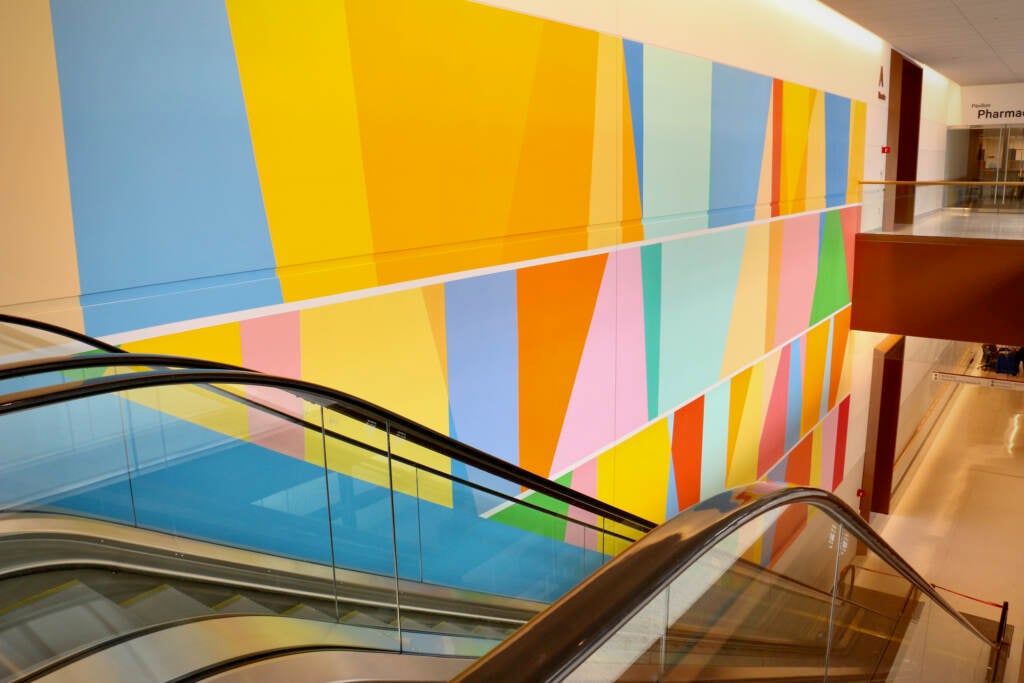
“Most people don’t normally go to hospitals for, let’s say, the best of reasons,” Odita said. “It’s a space where you’re doing a lot of thinking. I wanted to create a space that would bring people back outside, re-energize, and then come back into the hospital.”
Odita’s artwork is abstract, informed by the colors and patterns often found in traditional Nigerian textiles, then filtered through both his modern sensibility and the needs of a particular site. However, a 2010 study showed that abstract art may not be the most soothing for patients, even causing anxiety. Many patients prefer more recognizable landscape art.
Realizing where his artwork would be and who would be seeing it, Odita proceeded with caution.
“I had a very hard time picking those colors. It was very, very difficult,” he said. “I didn’t want any dark reds because of what that could connote. But I wanted to be able to create something that wasn’t too saccharine either. I think those colors, particularly on that long wall, hit it just right. The light and the space, it just fills itself.”
Both the Odita and Lin pieces play with sunlight. The hollow glass balls of the “Tree of Life” are made with crackles in the glass that cause it to glimmer. The brightly colored shapes of “Field and Sky” bounce daylight from the window, directing attention back outside.
Daylight plays a significant part of the overall hospital design. Every patient room has a large window drawing in lots of light, and even the operating rooms — normally positioned in the core of a hospital and sealed off from the wider world — have windows through which the sky can be seen.
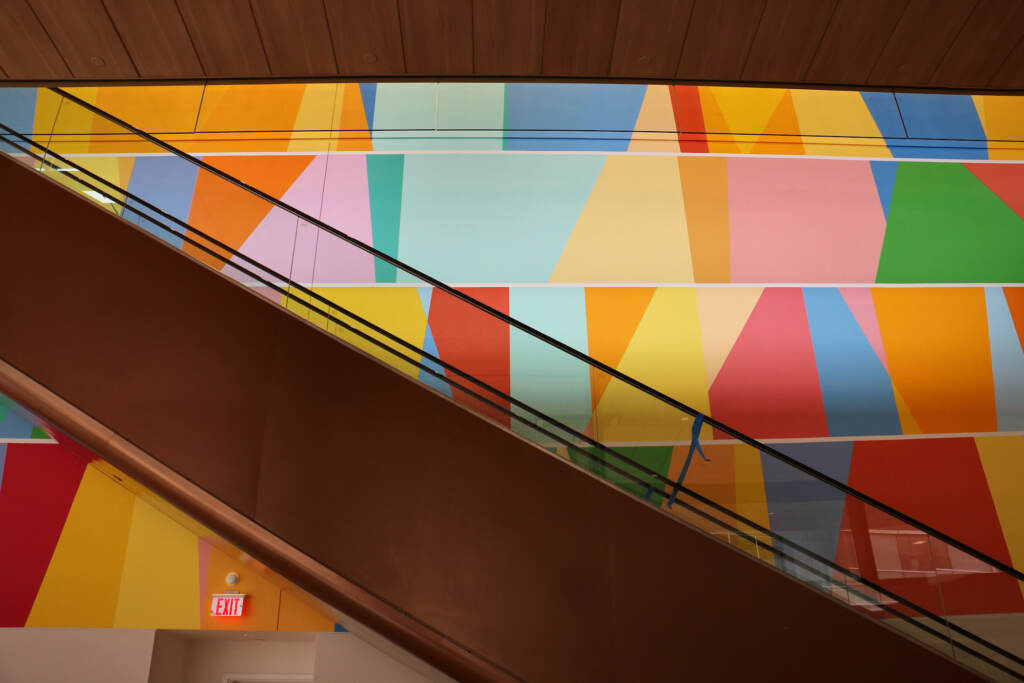
The artwork in the building leverages all that light and its healing properties.
“I really believe in that, actually, that you can help people with art,” Odita said. “Not just fluff art that’s just there to fill a space, but where they consider something that makes the viewer think about where they’re at.”
WHYY is your source for fact-based, in-depth journalism and information. As a nonprofit organization, we rely on financial support from readers like you. Please give today.



